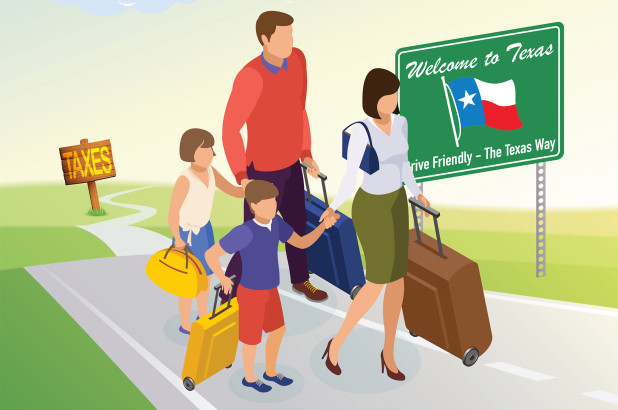
After the Connecticut General Assembly passed a billion-dollar tax hike in 2015, General Electric warned they might move their corporate headquarters out of the state if then-Gov. Dannel Malloy signed the bill. Malloy went ahead, and the following year General Electric announced the elimination of hundreds of jobs as they packed up the headquarters they’d called home for over 40 years.
That episode exemplifies a larger phenomenon happening across the United States over the last 10 years. According to population estimates for the end of the decade released by the US Census Bureau, millions of American families moved away from high-tax states to lower-tax ones, where work is rewarded and job creation is encouraged.
Most of those moves weren’t the result of high-profile standoffs like GE in 2015. Nor are taxes the most common reason people say they move (for instance, family reasons are much more common). But evidence suggests the burden of state and local government was an important factor for families moving around the country in search of the American Dream. Millions of regular people left states that penalized them for working hard, seeking or creating jobs, in favor of states who encouraged those things.
State and local tax burdens at the beginning of the decade, as measured by Washington, DC-based think tank Tax Foundation, had a strong negative relationship with population changes by the end of it. For every 1 percent higher the tax burden as a percentage of income in 2010, a state’s population was 1.4 percent smaller in 2019. In larger states, the 23 with populations higher than five million and more diversified economies, the correlation was a negative 2.4 percent.
At the extremes, high-tax states failed even more clearly than low-tax ones succeeded. Four of the six highest-tax states in 2010 were among the nine with population growth below 1 percent for the decade (the whole nation grew by 6 percent). Eight of the nine states with the lowest population growth were among the 17 highest-tax states. Meanwhile, none of the 10 states with population growth over 11 percent were among the 20 highest-tax states early in the decade and four were among the seven with no personal income or investment taxes. The population of low-tax Texas increased by more than the entire population of high-tax Connecticut.
State and local officials should learn from the past. But, unfortunately, new governors and state legislatures in high-tax states like Connecticut have doubled down on past policies by keeping taxes and spending high or raising them even further. And things are getting worse in the highest-taxed state in the country, New York, which has lost more than 200,000 people since just 2015. No one should be surprised.
Regardless of how those policies are sold, the facts show that they harm middle-class families the most — even while they give politicians the ability to pat themselves on the back. In the last decade, Americans decisively showed that they will move where they are welcomed by limited government, low taxes, low cost of living and economic opportunity. Politicians should heed that message.
![]()
Ryan Fazio is a Connecticut native. He writes about politics and economics and tweets @ryanfazio

